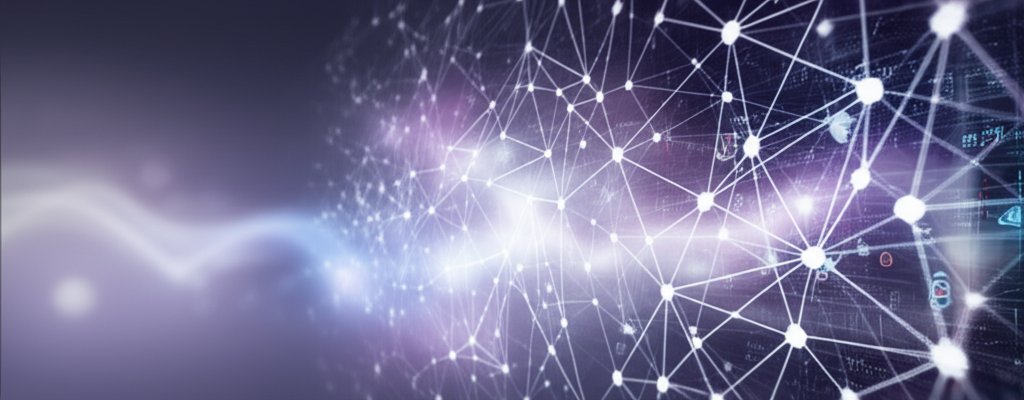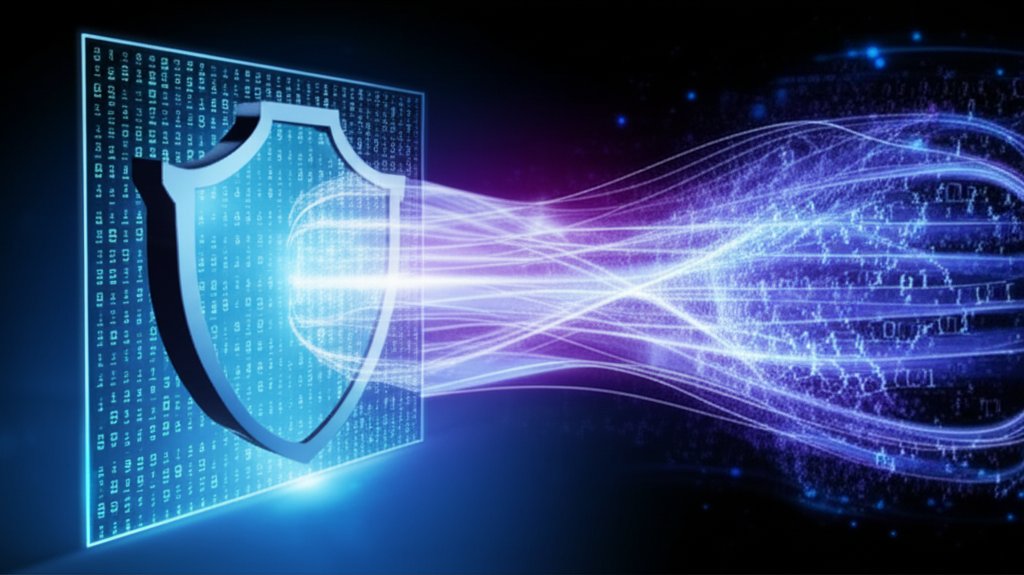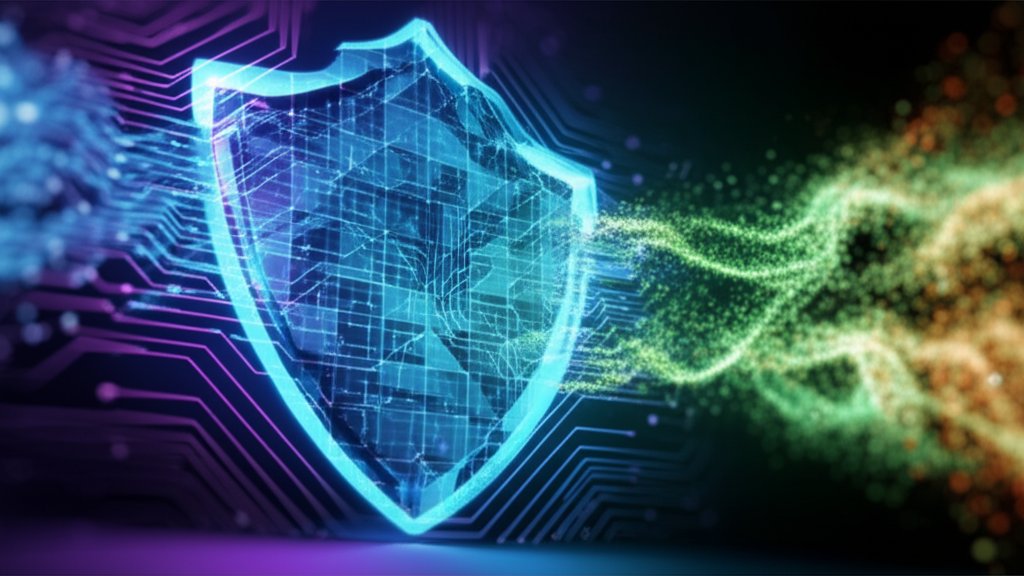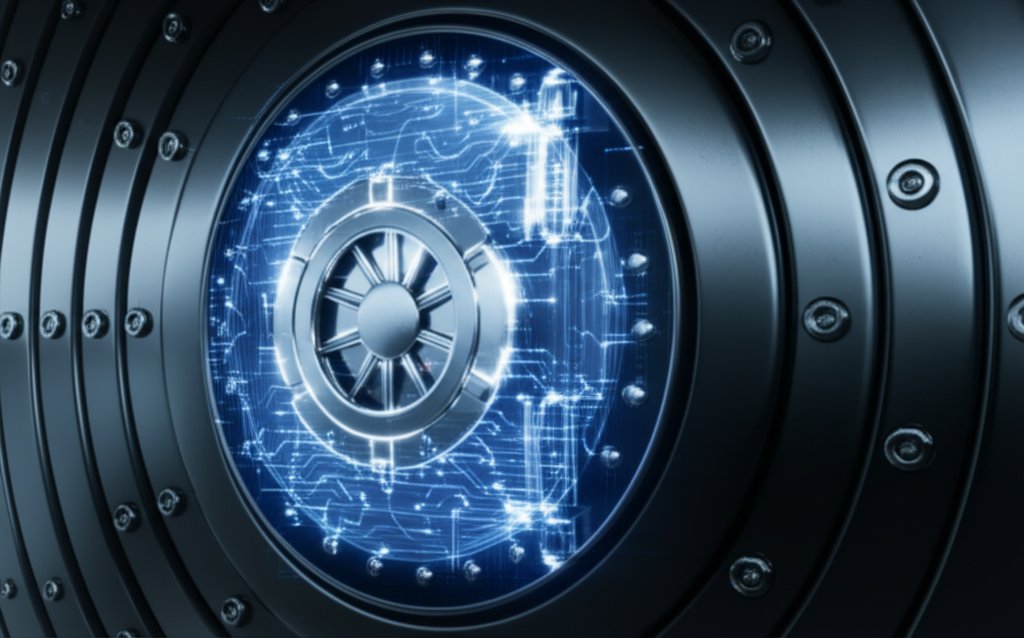As a security professional, I often hear people ask, “Is my data safe from quantum computers?” It’s a valid question, and one that often gets wrapped up in a lot of sci-fi speculation. The truth is, the world of quantum computing and quantum-resistant encryption is complex, and it’s easy to get lost in the sensational headlines. But don’t you worry, we’re going to cut through the noise together.
Today, we’re diving deep into the truth about Quantum-Resistant Encryption (QRE), separating the exciting potential and genuine concerns from the exaggerated hype. While the full power of quantum computing is still emerging, its unique capabilities pose a fundamental threat to the cryptographic standards that secure our digital world today. Understanding this necessitates our proactive embrace of QRE, not as a futuristic curiosity, but as an essential upgrade for our data security. My goal isn’t to alarm you but to empower you with clear, actionable insights so you can take control of your digital security, both now and in the future. So, let’s get started on understanding what this “future-proof” encryption really means for you and your business.
The Quantum Realm: Classical Computing vs. Quantum Computing
To truly grasp the upcoming shift, we first need to understand the fundamental difference between the computers we use every day and the super-powered machines of the quantum future.
Our Digital World: Classical Computers
Think about your laptop or smartphone. These are classical computers, and they work by processing information using “bits.” A classical bit is like a light switch – it’s either ON (representing a 1) or OFF (representing a 0) at any given moment. This binary system is the foundation of all the digital magic we’re used to, from sending emails to streaming movies.
Stepping into the Quantum: Qubits and Beyond
Now, imagine a light switch that can be ON, OFF, or even *both* ON and OFF at the same time. That’s a simplified way to think about a “qubit,” the fundamental building block of quantum computing. Qubits aren’t limited to a single state (0 or 1); they can exist in a “superposition” of both states simultaneously. It’s like flipping a coin that’s spinning in the air – it’s neither heads nor tails until it lands. This ability to be in multiple states at once allows quantum computers to perform many calculations in parallel, processing vast amounts of information in ways classical computers simply can’t.
Then there’s “entanglement,” a truly mind-bending quantum phenomenon. When two or more qubits are entangled, they become interconnected in such a way that the state of one instantly influences the state of the others, no matter how far apart they are. Einstein famously called this “spooky action at a distance.” This interconnectedness allows quantum computers to coordinate and explore many possible solutions simultaneously, dramatically accelerating problem-solving. It’s precisely these revolutionary capabilities – superposition and entanglement – that give quantum computers the potential to dismantle our current cryptographic safeguards by allowing them to efficiently search through an astronomical number of possibilities.
While we can’t show visual diagrams here, imagine these qubits as tiny, interconnected spheres, each capable of spinning in multiple directions at once, influencing its neighbors.
How Quantum Computers Could Break Encryption
So, why do these unique quantum properties matter for your data? Because our current encryption methods, the digital locks protecting your online life, rely on mathematical problems that are incredibly hard for classical computers to solve. But quantum computers, leveraging superposition and entanglement, could crack these problems like an egg.
Quantum’s Speed Advantage: Shor’s and Grover’s Algorithms
The primary threat comes from specific quantum algorithms that harness the power of qubits:
- Shor’s Algorithm: This is the big one. It’s a quantum algorithm that can efficiently factor large numbers and solve discrete logarithm problems. Why is this a problem? Because much of our public-key (asymmetric) encryption, like RSA and Elliptic Curve Cryptography (ECC) – the stuff that secures your HTTPS connections, digital signatures, and encrypted emails – relies on the difficulty of these very mathematical problems for classical computers. A sufficiently powerful quantum computer running Shor’s algorithm could potentially break this encryption in minutes, exposing your sensitive data.
- Grover’s Algorithm: While Shor’s targets asymmetric encryption, Grover’s algorithm poses a threat to symmetric encryption (like AES, which we use for encrypting files and secure communications). It doesn’t break symmetric encryption outright but makes brute-force attacks significantly more efficient. Instead of needing to try every single possible key, Grover’s algorithm could find the correct key in roughly the square root of the time. This means that current AES-256 keys might effectively offer the security of AES-128 against a quantum attack, necessitating a move to larger key sizes in the future.
The “Harvest Now, Decrypt Later” Danger
Here’s why the quantum threat is relevant now, even if “Q-Day” (the day quantum computers can break current encryption) is still years away. Adversaries, including state-sponsored groups, might be “harvesting” encrypted data *today*. They’re collecting this data – your sensitive communications, intellectual property, financial records – with the intention of storing it. Then, once powerful enough quantum computers become available, they’ll decrypt it. This “harvest now, decrypt later” (or HNDL, sometimes SNDL for “store now, decrypt later”) strategy means that data you encrypt today, if it needs to remain secure for decades, could be vulnerable tomorrow. It’s a stark reminder that proactive measures are critical.
Separating Quantum Encryption Hype from Reality: A Closer Look
Let’s address some of the common misconceptions floating around. It’s easy to get carried away by the futuristic nature of quantum discussions, but we need to stay grounded in what’s actually happening.
| Feature | Hype (Myth) | Reality (Truth) |
|---|---|---|
| Current Threat Level | Quantum computers are already breaking widespread encryption daily. Your data is instantly vulnerable. | Today’s quantum computers are not yet capable of breaking common encryption. Significant technological advancements are still needed. |
| Need for Quantum Hardware | To use quantum-resistant encryption, you’ll need a quantum computer yourself. | Post-Quantum Cryptography (PQC) algorithms run on classical computers (the ones we use now). You won’t need new hardware to benefit. |
| PQC as a “Magic Bullet” | Implementing PQC is a one-time fix that solves all future security problems. | PQC is a crucial component but not a standalone solution. Crypto-agility and overall cybersecurity hygiene remain vital. |
| When is “Q-Day”? | It’s either happening now or won’t happen for 50+ years. | Most experts estimate the 2030s as a realistic timeframe, but it’s uncertain. Preparation needs to start now, especially for long-lived data. |
Myth 1: Quantum Computers Are Already Breaking All Encryption
Reality: Let’s be clear: while quantum computers like those from IBM, Google, and IonQ are making rapid advancements, they are still in their infancy. Today’s quantum computers are impressive but are primarily research tools. They simply aren’t powerful enough yet to break the encryption safeguarding our everyday online activities. Significant engineering and scientific breakthroughs are still needed before they become a widespread threat. So, you can still browse securely!
Myth 2: You Need a Quantum Computer to Use Quantum-Resistant Encryption
Reality: This is a big one to demystify! Post-Quantum Cryptography (PQC) – which is what we’re talking about when we say quantum-resistant encryption – consists of new algorithms designed to run perfectly fine on our *current, classical* computers. You won’t need to buy a quantum supercomputer to protect your data. These algorithms will be integrated into the software and systems we already use, just like current encryption standards.
Myth 3: Quantum-Resistant Encryption is a Magic Bullet
Reality: PQC is a vital piece of the future security puzzle, but it isn’t a silver bullet. Think of it as upgrading the lock on your front door. It’s essential, but you still need good habits like locking the door, having an alarm system, and not leaving spare keys under the mat. Concepts like “crypto-agility” – the ability of systems to easily swap out old cryptographic algorithms for new ones – are equally crucial. Cybersecurity is always about a layered defense.
Important Distinction: Quantum Cryptography (QKD) vs. Post-Quantum Cryptography (PQC)
These terms often get mixed up, but for everyday users and small businesses, the distinction is important:
- Quantum Key Distribution (QKD): This is a method of securely exchanging encryption keys using the principles of quantum physics. It relies on quantum hardware to detect eavesdropping and ensure key secrecy. While fascinating, QKD is currently expensive, has range limitations, and typically requires dedicated hardware infrastructure. It’s more of a specialized solution for critical infrastructure or highly sensitive, point-to-point communications.
- Post-Quantum Cryptography (PQC): This is our main focus. PQC refers to new mathematical algorithms that are designed to be resistant to attacks by large-scale quantum computers, but crucially, they run on *classical* (our current) computers. This is the solution that will eventually protect most of our online activities, from web browsing to secure email.
For most of us, PQC is the future of our digital security, not QKD.
The Solution: Post-Quantum Cryptography (PQC)
What is PQC?
PQC algorithms are the new generation of cryptographic systems engineered to withstand both classical and quantum attacks. Instead of relying on the difficulty of factoring large numbers, these new algorithms leverage different types of complex mathematical problems that are believed to be hard even for quantum computers to solve. We’re talking about things like lattice-based cryptography, hash-based cryptography, and code-based cryptography. It’s a whole new mathematical playground for keeping your secrets safe.
NIST’s Role in a Quantum-Safe Future
You might be wondering who’s in charge of making sure these new algorithms are robust and widely adopted. That would be the National Institute of Standards and Technology (NIST) in the U.S. They’ve been leading a global, multi-year competition to evaluate and standardize the most promising quantum-resistant algorithms. It’s been a rigorous process involving cryptographers from all over the world. They’ve already announced their initial set of chosen algorithms, like CRYSTALS-Kyber for key exchange and CRYSTALS-Dilithium for digital signatures, and migration to these standards is actively encouraged. This standardization is a massive step towards a quantum-safe future.
The Road Ahead: Challenges and Development
The journey to a fully quantum-safe digital world isn’t without its hurdles. One of the biggest challenges is the sheer scale of the “crypto-agile” migration – updating every piece of software, hardware, and protocol that relies on cryptography. It’s a massive undertaking, often compared to the Y2K bug, but far more complex. Developers are actively working with programming tools and frameworks like Qiskit (IBM’s quantum software development kit) and Cirq (Google’s framework) to experiment with and implement these new algorithms. There’s also the challenge of ensuring these new algorithms are not only quantum-resistant but also efficient and secure against classical attacks. It’s a dynamic and exciting field of ongoing research and development.
What You Can Do NOW: Practical Steps for Everyday Users & Small Businesses
While “Q-Day” isn’t here yet, that doesn’t mean you should sit idly by. Proactive measures are key to protecting your data, regardless of the threat.
For Everyone (Individuals & Small Businesses):
- Don’t Panic: Your current encryption is robust against today’s threats. There’s no need to fear immediate quantum attacks on your everyday online activities.
- Stay Informed: Keep an eye on reputable cybersecurity news sources and NIST updates. Understanding the landscape is your first line of defense.
- Software Updates: This is a golden rule of cybersecurity, and it remains paramount. Update your operating systems, web browsers, apps, and all software diligently. When PQC algorithms are ready, they’ll be rolled out through these updates.
- Strong Passwords & MFA: Foundational cybersecurity practices never go out of style. Use unique, strong passwords for every account and enable multi-factor authentication (MFA) everywhere possible. These practices protect you from the vast majority of *current* cyber threats, which are far more immediate than quantum ones.
Specific Steps for Small Businesses:
- Inventory Your Data & Systems: Do you know what sensitive data your business holds, where it lives, and how long it needs to remain confidential? For example, medical records or long-term contracts need a longer shelf-life of protection. Begin by identifying your “crown jewels” that require long-term security.
- Understand Your “Crypto-Agility”: How easily can your IT systems and software swap out old encryption algorithms for new ones? This might involve discussions with your IT team or vendors. Starting to plan for this flexibility now will save you headaches down the line.
- Consult with IT/Security Providers: Talk to your managed service providers (MSPs) or cybersecurity experts. Ask them about their awareness of the quantum threat and their plans for PQC transition. Your vendors should be prepared to guide you.
- Educate Your Team: Raise awareness within your organization about the future quantum threat and, just as importantly, reinforce the importance of current security hygiene. A well-informed team is a strong defense.
- Consider Hybrid Approaches: As we transition, it’s likely we’ll see “hybrid” encryption – systems that use both current and post-quantum algorithms simultaneously for added security. This gradual approach will help ensure a smoother transition.
Final Verdict: Embracing a Quantum-Safe Tomorrow
The “quantum apocalypse” isn’t looming over us tomorrow, but the march of technology is relentless. The reality of quantum computing’s potential impact on our digital security is a serious, long-term challenge that requires proactive attention, not panic. The good news is that the cybersecurity community, led by organizations like NIST, is already well on its way to building the quantum-resistant future. For individuals and small businesses, the path forward involves staying informed, maintaining excellent current cybersecurity hygiene, and beginning to ask the right questions about future-proofing your data. We’re not facing an insurmountable foe; we’re preparing for an inevitable evolution. Your digital security remains in your hands, and by taking these steps, you’re embracing a quantum-safe tomorrow.
Explore the Quantum Realm!
Intrigued by quantum computing and want to learn more hands-on? I encourage you to try the IBM Quantum Experience for free. It’s an accessible way to explore the basics of quantum computing and even run experiments on real quantum hardware!
Frequently Asked Questions (FAQ)
Q: Is my online banking safe from quantum computers today?
A: Yes, absolutely. Current quantum computers are not capable of breaking the encryption used by online banking and other secure websites. These systems rely on robust encryption that is secure against today’s threats. The quantum threat is a future concern, not an immediate one.
Q: What is “Q-Day” and when will it happen?
A: “Q-Day” refers to the theoretical point in time when quantum computers will be powerful enough to break widely used current encryption algorithms like RSA and ECC. Expert estimates generally place this in the 2030s, but it’s an educated guess. It’s an uncertain but inevitable event.
Q: Do I need to buy new hardware to use quantum-resistant encryption?
A: No. Post-Quantum Cryptography (PQC) algorithms are designed to run on the classical computers and devices we use today. When these new standards are adopted, they will be integrated into software updates for your operating systems, browsers, and applications, not requiring new specialized hardware for the end-user.
Q: What’s the main difference between Quantum Key Distribution (QKD) and Post-Quantum Cryptography (PQC)?
A: QKD uses quantum physics to create and exchange encryption keys, requiring specialized quantum hardware and offering highly secure point-to-point communication. PQC, on the other hand, consists of new mathematical algorithms that run on classical computers and are designed to resist quantum attacks. For most general internet users and businesses, PQC is the relevant solution for future-proofing data security.
Q: Should small businesses be worried about quantum encryption right now?
A: Small businesses should be *aware* and start *planning*, but not *worried* in a panic sense. The immediate threat is low. However, if your business handles sensitive data that needs to remain confidential for many years, you should begin assessing your crypto-agility and discussing PQC transition plans with your IT providers. Prioritize strong current cybersecurity practices first.









